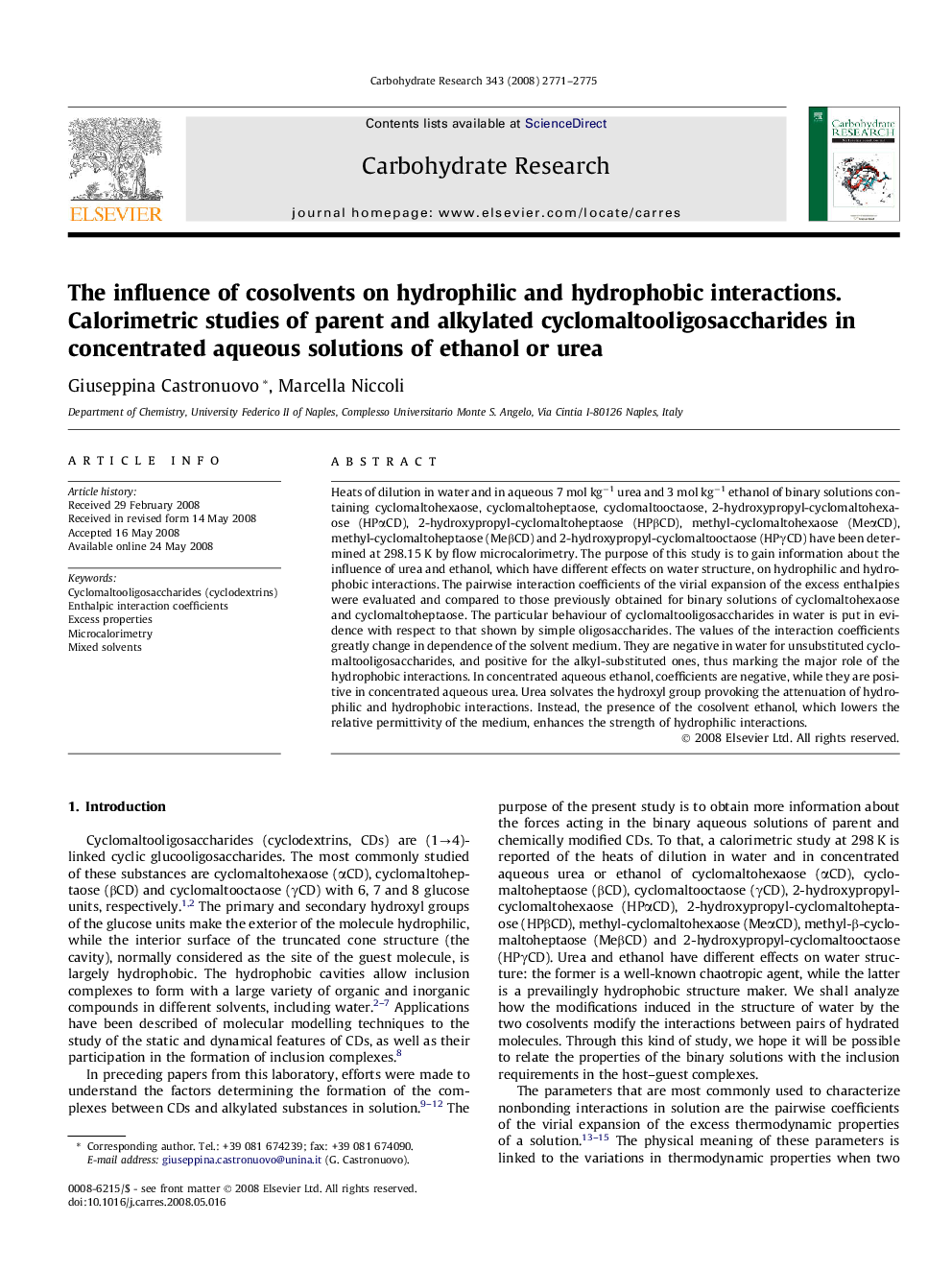| Article ID | Journal | Published Year | Pages | File Type |
|---|---|---|---|---|
| 1385156 | Carbohydrate Research | 2008 | 5 Pages |
Heats of dilution in water and in aqueous 7 mol kg−1 urea and 3 mol kg−1 ethanol of binary solutions containing cyclomaltohexaose, cyclomaltoheptaose, cyclomaltooctaose, 2-hydroxypropyl-cyclomaltohexaose (HPαCD), 2-hydroxypropyl-cyclomaltoheptaose (HPβCD), methyl-cyclomaltohexaose (MeαCD), methyl-cyclomaltoheptaose (MeβCD) and 2-hydroxypropyl-cyclomaltooctaose (HPγCD) have been determined at 298.15 K by flow microcalorimetry. The purpose of this study is to gain information about the influence of urea and ethanol, which have different effects on water structure, on hydrophilic and hydrophobic interactions. The pairwise interaction coefficients of the virial expansion of the excess enthalpies were evaluated and compared to those previously obtained for binary solutions of cyclomaltohexaose and cyclomaltoheptaose. The particular behaviour of cyclomaltooligosaccharides in water is put in evidence with respect to that shown by simple oligosaccharides. The values of the interaction coefficients greatly change in dependence of the solvent medium. They are negative in water for unsubstituted cyclomaltooligosaccharides, and positive for the alkyl-substituted ones, thus marking the major role of the hydrophobic interactions. In concentrated aqueous ethanol, coefficients are negative, while they are positive in concentrated aqueous urea. Urea solvates the hydroxyl group provoking the attenuation of hydrophilic and hydrophobic interactions. Instead, the presence of the cosolvent ethanol, which lowers the relative permittivity of the medium, enhances the strength of hydrophilic interactions.
Graphical abstractFigure optionsDownload full-size imageDownload as PowerPoint slide
